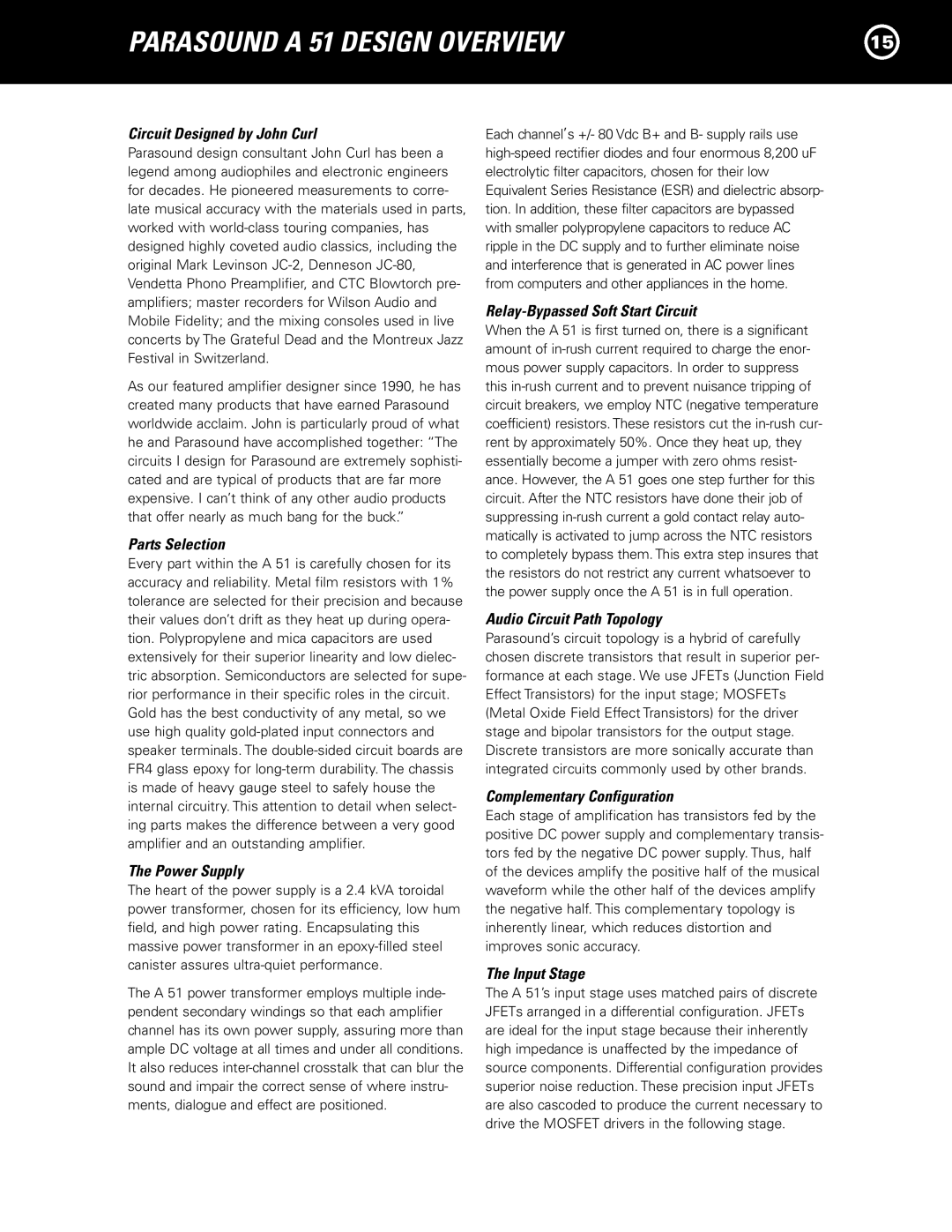PARASOUND A 51 DESIGN OVERVIEW | 15 |
|
|
Circuit Designed by John Curl
Parasound design consultant John Curl has been a legend among audiophiles and electronic engineers for decades. He pioneered measurements to corre- late musical accuracy with the materials used in parts, worked with
As our featured amplifier designer since 1990, he has created many products that have earned Parasound worldwide acclaim. John is particularly proud of what he and Parasound have accomplished together: “The circuits I design for Parasound are extremely sophisti- cated and are typical of products that are far more expensive. I can’t think of any other audio products that offer nearly as much bang for the buck.”
Parts Selection
Every part within the A 51 is carefully chosen for its accuracy and reliability. Metal film resistors with 1% tolerance are selected for their precision and because their values don’t drift as they heat up during opera- tion. Polypropylene and mica capacitors are used extensively for their superior linearity and low dielec- tric absorption. Semiconductors are selected for supe- rior performance in their specific roles in the circuit. Gold has the best conductivity of any metal, so we use high quality
The Power Supply
The heart of the power supply is a 2.4 kVA toroidal power transformer, chosen for its efficiency, low hum field, and high power rating. Encapsulating this massive power transformer in an
The A 51 power transformer employs multiple inde- pendent secondary windings so that each amplifier channel has its own power supply, assuring more than ample DC voltage at all times and under all conditions. It also reduces
Each channel’s +/- 80 Vdc B+ and B- supply rails use
Relay-Bypassed Soft Start Circuit
When the A 51 is first turned on, there is a significant amount of
Audio Circuit Path Topology
Parasound’s circuit topology is a hybrid of carefully chosen discrete transistors that result in superior per- formance at each stage. We use JFETs (Junction Field Effect Transistors) for the input stage; MOSFETs (Metal Oxide Field Effect Transistors) for the driver stage and bipolar transistors for the output stage. Discrete transistors are more sonically accurate than integrated circuits commonly used by other brands.
Complementary Configuration
Each stage of amplification has transistors fed by the positive DC power supply and complementary transis- tors fed by the negative DC power supply. Thus, half of the devices amplify the positive half of the musical waveform while the other half of the devices amplify the negative half. This complementary topology is inherently linear, which reduces distortion and improves sonic accuracy.
The Input Stage
The A 51’s input stage uses matched pairs of discrete JFETs arranged in a differential configuration. JFETs are ideal for the input stage because their inherently high impedance is unaffected by the impedance of source components. Differential configuration provides superior noise reduction. These precision input JFETs are also cascoded to produce the current necessary to drive the MOSFET drivers in the following stage.
